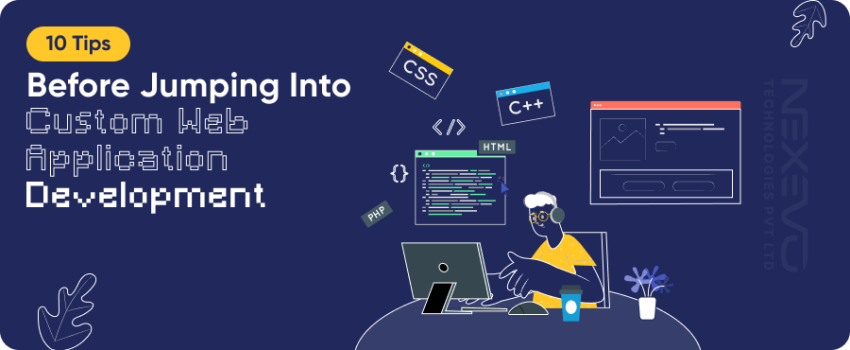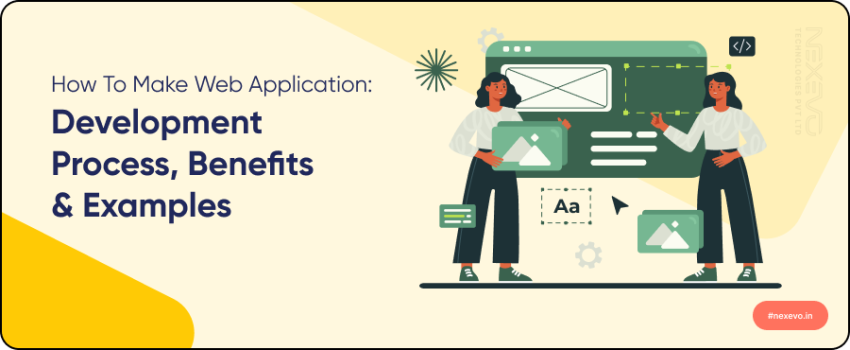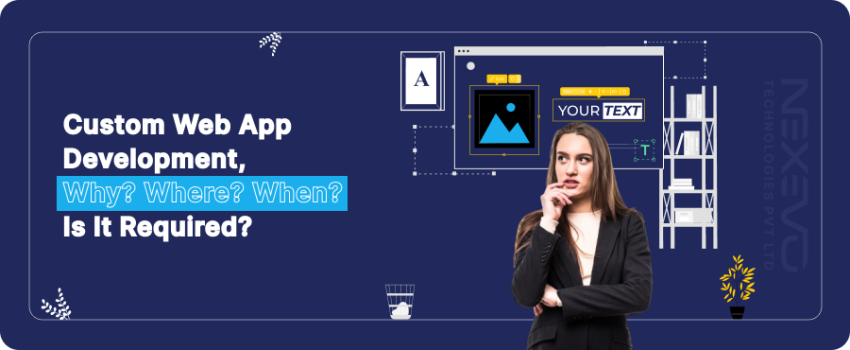10 Practices to Consider Before Choosing Custom Web Application Development

Introduction:
Custom web application development is a significant undertaking that requires careful planning, execution, and
attention to detail. Before diving into the development process, it's crucial to consider various factors that can
impact the success and effectiveness of your web application. Here are 10 tips to guide you through the
pre-development phase and ensure a smoother journey toward creating a successful and best web apps.
10 Tips for Custom Web Application Development for the Client
1. Mapped Objectives:
- Defining clear objectives is akin to charting a course for success in custom web app development services. It serves as the foundational step that delineates the purpose, audience, and anticipated outcomes of the application.
- Define concrete outcomes and success metrics that serve as yardsticks for evaluating the efficacy of the web application.
2. End-to-End Market Research:
- Before embarking on the journey of custom web application services, it's essential to recognize that market dynamics, web application technologies and user preferences evolve rapidly in the digital landscape. Conducting thorough market research lays the groundwork for informed decision-making and strategic planning.
- Market research is an ongoing process that requires agility and adaptability. Be prepared to pivot your strategy based on new insights, changing market conditions, and evolving user preferences.
3. Prioritizing User-Centric Design:
- User experience (UX) lies at the heart of effective web application design, influencing how users interact with and perceive your application. By placing users at the forefront of your design process, you can create immersive and compelling experiences that foster long-term user loyalty and adoption.
- Stay abreast of emerging design trends, patterns, and best practices in the UX/UI design landscape.
4. Pinning the Right Technology:
- Selecting the right technology stack is akin to laying the foundation for a sturdy skyscraper. It forms the backbone of your web application, influencing its scalability, security, and performance.
- Don't hesitate to seek advice and recommendations from experienced developers, industry experts, and peer communities when choosing your technology stack
5. Set up a Proper Development
Process:
- This process serves as the framework that guides the entire lifecycle of the project, from conception to deployment and beyond.
- Remain flexible and adaptable in response to changing requirements, emerging technologies, and evolving market trends.
6. Security:
- As users increasingly entrust sensitive information to online platforms, ensuring the protection of their data has become non-negotiable. Therefore, focusing on security from the outset is not only a best practice but also a fundamental requirement for building trust and credibility among users.
- Educate your users on security best practices, such as creating strong passwords, recognizing phishing attempts, and safeguarding personal information.

7. Scalability:
- Implementing scalability strategies ensures that your web application can seamlessly handle increasing traffic, data volumes, and functionality demands without compromising performance or reliability.
- Scalability is an ongoing process that requires continuous evaluation and refinement. Regularly assess system performance, user feedback, and evolving business requirements to identify scalability bottlenecks and opportunities for optimization
8. Rigorous Testing:
- Comprehensive testing not only ensures optimal functionality but also bolsters user satisfaction and trust. Adopting a systematic approach to testing empowers developers to uncover defects, address vulnerabilities, and deliver high-quality software that meets user expectations.
- Foster a culture of quality within your development team and organization, emphasizing the importance of testing, code reviews, and continuous improvement.
9. Design Post Launch Support and
Maintenance:
- Planning for post-launch support and maintenance is essential to ensure the long-term success and sustainability of your web application. By allocating resources and establishing protocols for ongoing support, maintenance, and feature enhancements, you can address user feedback, fix bugs, and adapt to evolving requirements effectively.
- Anticipate future scalability requirements and plan architectural enhancements and infrastructure upgrades accordingly.
10. Visualise Continuous
Improvement:
- By nurturing an environment that values learning, collaboration, and adaptability, you empower your team to innovate, grow, and stay ahead of the curve.
- Keep abreast of emerging technologies, industry trends, and market dynamics to anticipate future opportunities and challenges.
Conclusion
In conclusion, by embracing the ten tips outlined, you pave the path for the best web application development. With
clear objectives, thorough research, and a culture of continuous improvement, your journey becomes a roadmap to
crafting a standout web application that resonates with users and excels in today's digital landscape.
“Nexevo technologies based in Bangalore, is a proficient web development company specializing in services ranging from web application development to digital marketing services. As an award-winning web designing and development company, we have been operating since 2012."
Frequently asked questions
1. What is custom web application development?
Custom web application development involves creating unique and tailored web solutions to meet specific business needs. It includes designing, coding, testing, and deploying web applications from scratch.
2. Why is it essential to define clear objectives before starting web application development?
Clear objectives serve as a roadmap, outlining the purpose, target audience, and expected outcomes of the web application. They provide a foundation for successful development and evaluation of the application's effectiveness.
3. Why plan for post-launch support and maintenance in web application development?
Post-launch support and maintenance are vital for long-term success. It allows for addressing user feedback, fixing bugs, and adapting to evolving requirements, ensuring sustained performance and user satisfaction.
#webapplication #webapps #customwebapps #webapplicationtechnologies #webdeveloping #application #mobileapplication #bestwebapplicationservices









